Why Penn Relays Is the Most Pure Form of Competing
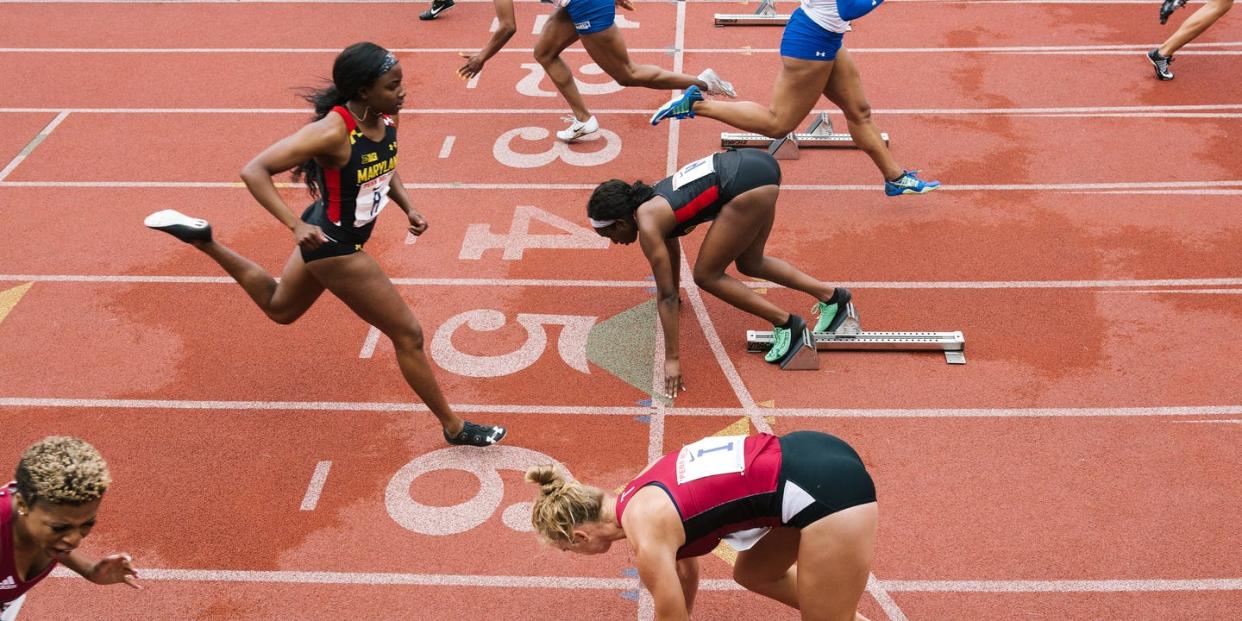
I moved to Philly about four years ago, and I was riding my bike over the bridge when I saw massive amounts of high-school and college teams walking around Franklin Field and University of Pennsylvania. I was curious about what was going on, so I did some research and found out about the Penn Relays. I was fascinated. It’s the largest and oldest track-and-field relay meet in the country, and it convenes for about three days and hosts thousands of athletes. As a photographer, you get these strong, assured, gut feelings about wanting to shoot something, but you can’t really explain why, and this was one of them.
Franklin Field itself is incredible. It’s huge-it was built in the late 1800s specifically for Penn Relays, and it doesn’t really look like it’s changed that much. The track and the turf have been updated, but the building is this beautiful historic relic. And Penn Relays is about tradition, it’s about history, and it’s sort of this marker of accomplishment in competition. With the caliber of athletes, range of events, and the number of spectators it draws, to me it is completely apart from any other athletic competition, running or otherwise.
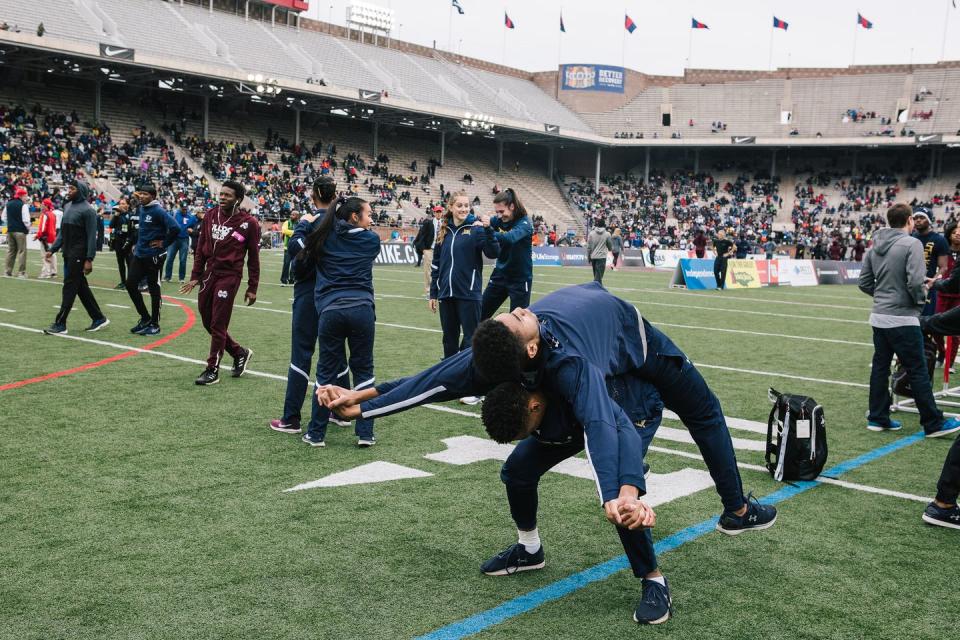
Navy athletes stretch before competition at Franklin Field.
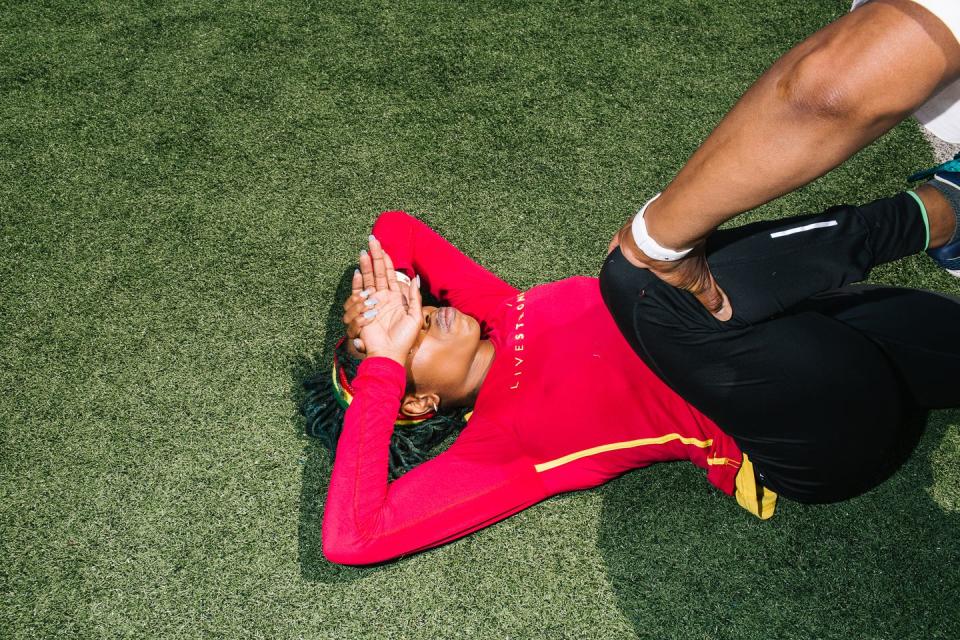
Chante Moore, a sprinter representing Guyana, has her legs stretched before the Olympic Development’s USA vs. the World women’s 4x100.
Track-and-field events are full of color and light, symmetry and geometry. There’s this emotion, a sort of heightened sense of drama. And you’re witnessing something really special and meaningful in the athletes, this isolated time in their lives that they’ve been training for.
[Run faster, stronger and longer with this 360-degree training program.]
While there are a lot of high-schoolers and a lot of collegiate athletes, Penn Relays is known for the Olympic Development races, and in those athletes you see such immense physicality. I’ve never seen so many defined hamstrings or back muscles in my life.
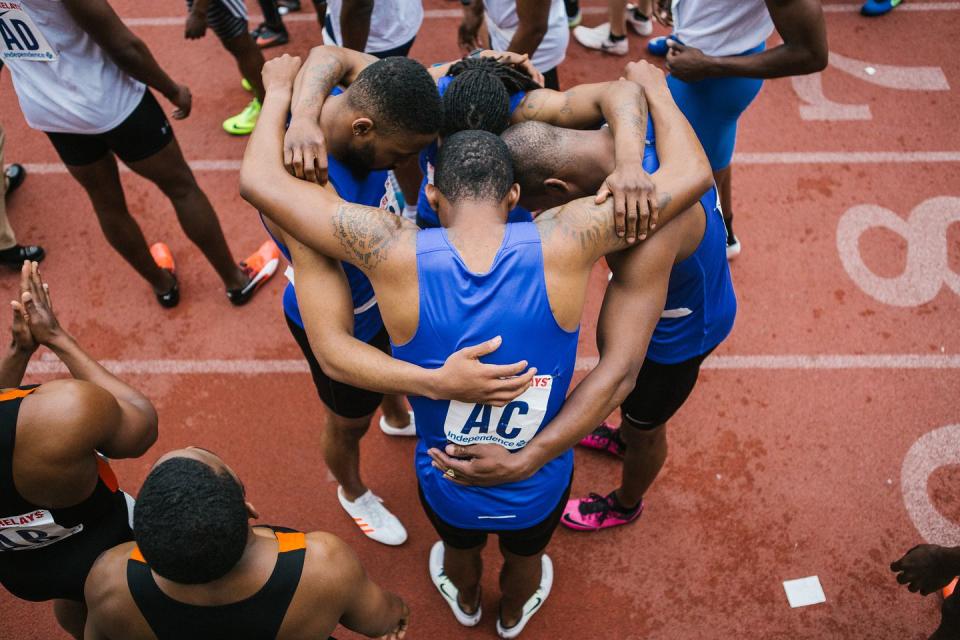
An Olympic Development men’s team prays together before being led to the starting line.
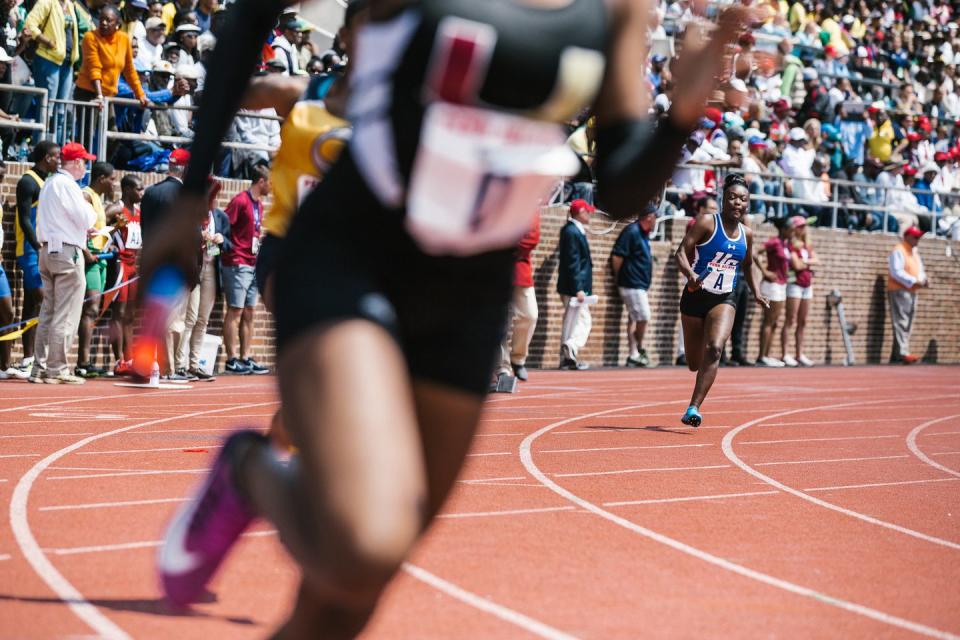
Kira Alexander, from Union Catholic School, during the 4x100 Tri-State high school girls’ relay.
I like finding the moments that aren’t normally covered or seen, that speak to something a little bit more significant. When you check in to get your media pass, you get a schedule of what’s happening each day. I looked through it, and I saw that there were events at 10 and 11 o’clock on Thursday night. I was like, “What is this?” And it was for men’s and women’s 5,000 and 10,000 meters-they casually call it “distance night.”
I knew I had to see what it was all about. So you’re in this huge stadium, and during the day the stands are packed, and it’s hot, there are people everywhere. But except for a few people scattered in the front, on that Thursday night, there was no one in the stands. Everyone was in-field, milling around, and these runners were going all out. It takes a long time to run 10,000 meters (25 laps, to be precise). And aside from the coaches shouting at the athletes when they ran by, it was quiet. Toward the end, the custodial crew came out to start cleaning up the bleachers. It was a strange sight, but it felt pure. It felt like it wasn’t for the spectators.
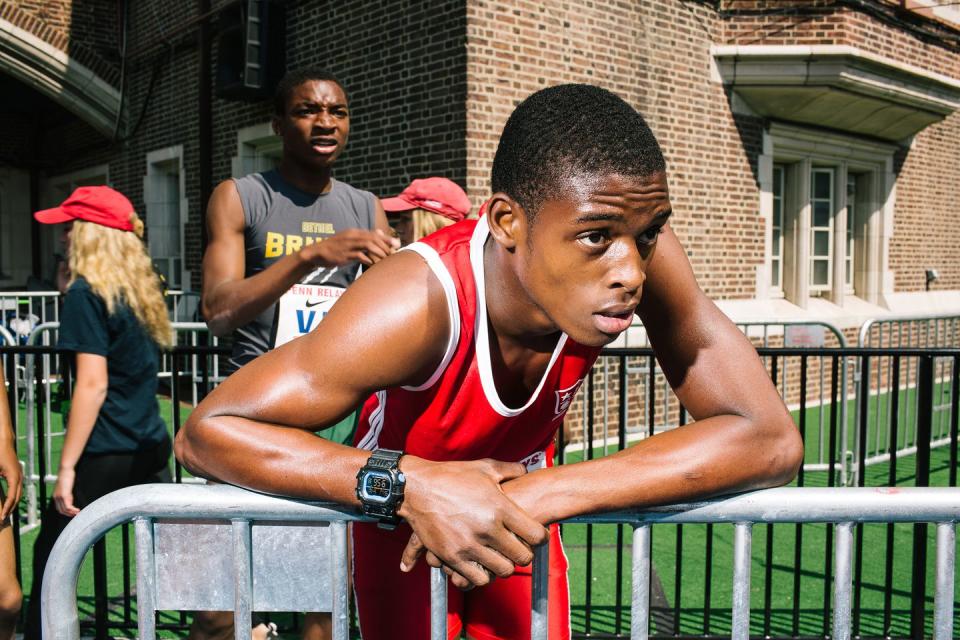
Alden Pringle, 15, from Bellefield High School in Jamaica, watches his teammates finish the high school boys’ 4x400.
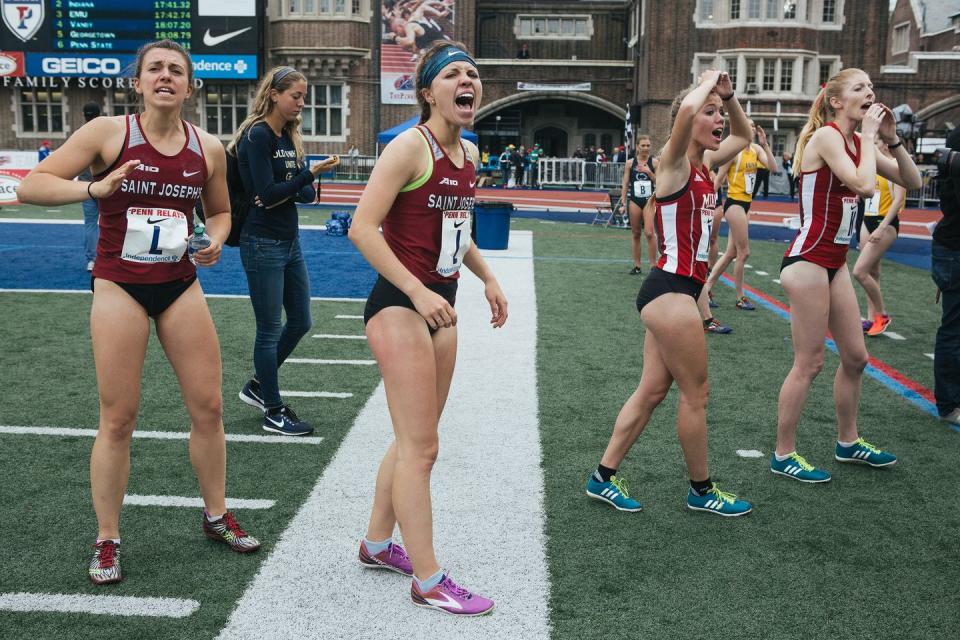
Saint Joseph’s University cheers on their remaining teammate toward the finish line.
And when the athletes are done, they all just collapse on the track in exhaustion. It’s weird because you see all these bodies motionless, all splayed out on the track. Eventually they get up, and they’re all congratulating one another. There’s this camaraderie because they all just went through this really hard event.
The photos from that night speak to the essence of what Penn Relays is-a really high level of competition that the athletes have gone through together, which generates this kind of mutual respect and support. People were recovering, but all the racers congratulated one another and checked in. And I just loved that. Because there were no crowds that they were doing this for.
It was methodical, meditative, and incredibly difficult, and they’re just doing it among themselves. And that feels like the most pure way of competing, where it’s about your team, it’s about the self-the pressure you put on yourself-and it’s like a solo journey. A lot of track feels that way. Even if you’re in a relay, it’s on you. Even if it’s 100 or 400 meters, you have to pull your part. Being there felt like witnessing what the soul of running races is.
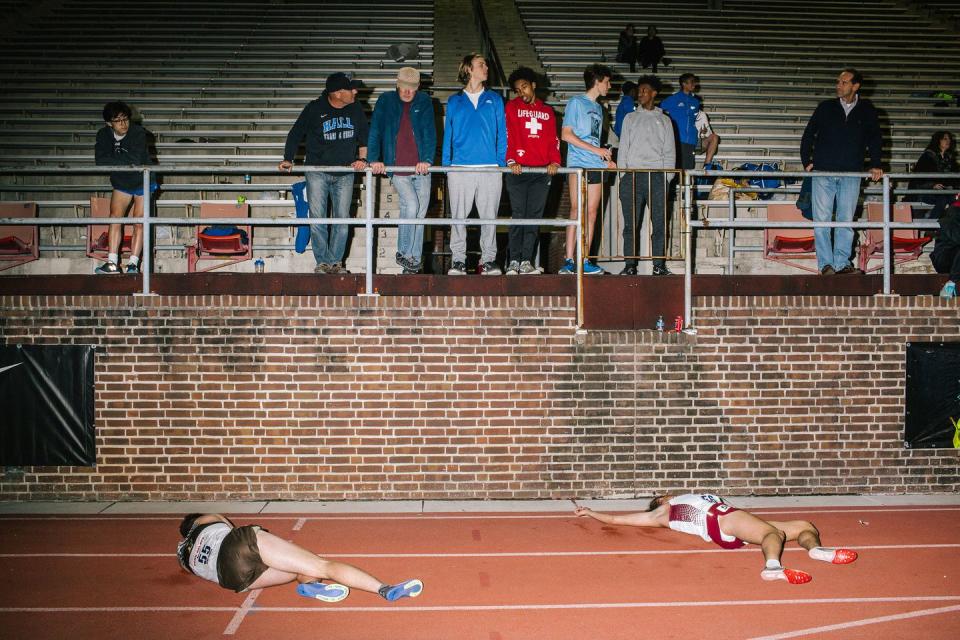
(From left, on track) Patrick Reilly, 22, from Lehigh University, and Marc Steinsberger, 24, from Temple University, rest on the track after completing the men’s 5,000 meters.
One of the other things that really amazed me about the Penn Relays was the accessibility among the athletes. When they had USA vs. the World with the Olympians, those races were scheduled in between the high school boys’ 4x100, and the college women’s 4x200. It’s very down-to-earth.
You could just watch Justin Gatlin warm up. He’s one of the biggest track athletes in the world, and next to him there would be a high-schooler from Maryland on the phone or eating a sandwich or something. Or Sherone Simpson, an Olympic gold medalist from Jamaica, is just over there stretching. You could go up and talk to them.
Everyone was on the same field together. -Michelle Gustafson
('You Might Also Like',)

